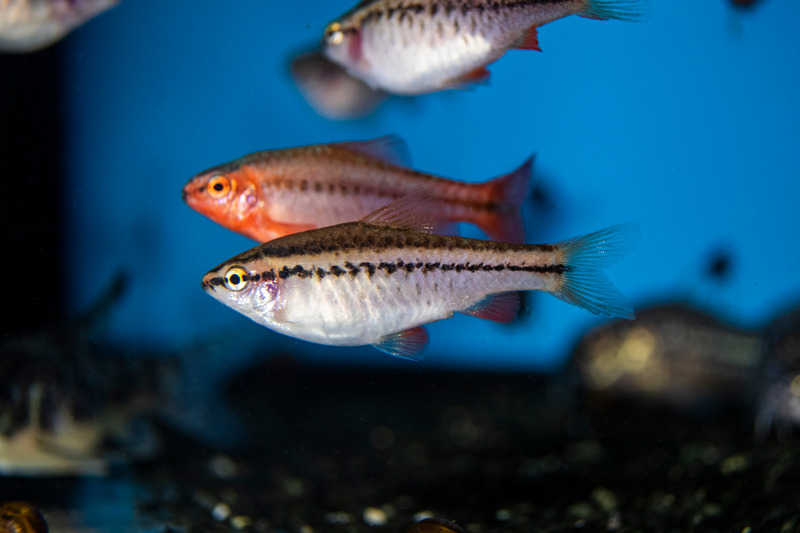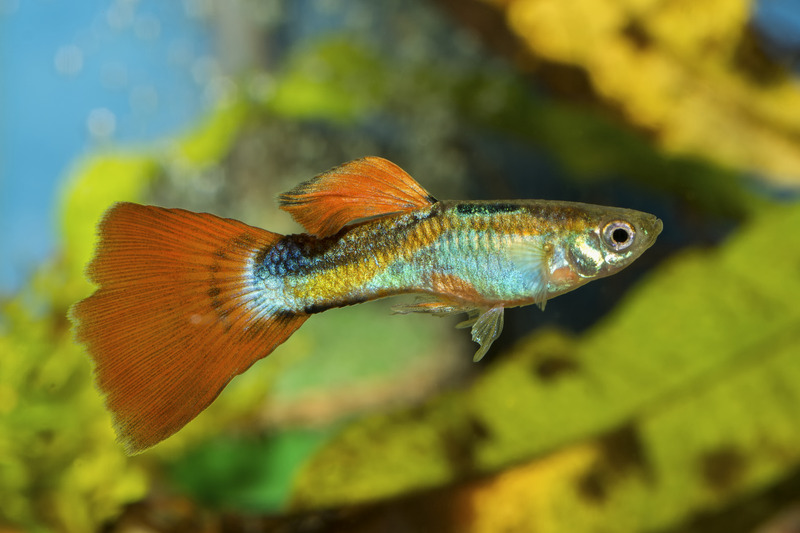Fish can make great pets, as they’re fun to look at and (fairly) low maintenance. Whether you’re thinking of getting a pet fish for yourself or your child – or if you’re looking to add a new addition to your fish tank – it’s important to do your research first.
Read on to find out the best types of fish for pets.
Fish as pets for children
Fish make good starter pets for children, helping them learn how to look after an animal, while giving them a new responsibility – under close adult supervision of course! And you can find out more about keeping fish as pets for kids here.
Pet fish types
There are thought to be around 34,000 different types of fish! Although most of these won’t be available at your local pet fish shop, there are still plenty of different fish types to choose from.
When it comes to selecting a pet fish, consider care and tank requirements, as well as the other types of fish they like to live with, or if they prefer to live alone. Some species of fish can be super high-maintenance, and incorrect care can result in a lot of disappointment, so make sure you always do your research before getting a new fish and consider:
- Tank size. As a general rule, we would recommend that the length of your tank should be six times the maximum potential adult length of your fish, with the depth and width of your tank being two times your fish’s length. Bear in mind that this is a minimum requirement, and some species of fish will need much bigger tanks. You will also need to increase the size of your tank appropriately if you have more than one fish, and you can ask your local pet fish shop for more advice on this.
- Tank décor and environmental enrichment. All types of fish will need plants, wood, or rocks in their tank so they have somewhere they can hide and feel safe. But make sure you don’t crowd your tank too much, as your fish will still need plenty of room for swimming! And it’s worth considering enrichment – such as bridges and tunnels – to help keep your fish entertained, as these creatures can get bored – just like the rest of us!
- Water-type. Make sure you test your tap water before you fill your tank, as some species of fish are adapted to particular water conditions, which may not match up with your local water supply. But don’t worry if your tap water isn’t suitable for your fish, as you can ask your local pet fish shop about ways to adjust this.
- Who your fish likes to live with, or if they prefer living alone. This is really important, as you don’t want your fish to see their tank-mate as a tasty snack! And housing the wrong fish together can lead to bullying, fighting, or general unhappiness.
- What, and how much, your fish needs to eat. While some types of fish really aren’t fussy, others may be extremely specific about what they will eat and would rather starve than eat the wrong food! Even fish that are good eaters may eat food types that are unsuitable or even dangerous for them. So, make sure you do your research on the foods that are best suited to your fish and how much they need to eat. You can find more on this topic in our article on how often to feed your fish.
- If your fish reproduces easily. This is worth being aware of, as you don’t want lots of baby fish appearing unexpectedly, especially if you don’t have the capacity to look after them properly.
To make selecting your fish a little easier, we’ve created a list of some of the best types of fish for beginners:
Coldwater fish types
In addition to the basic requirements listed above, coldwater varieties of fish tend to only require a tank, filter, and dechlorinator. Also make sure you clean your fish tank regularly and you can find more information on how to set up a new fish tank here.
- Classic (single-tailed) goldfish
In our opinion, this classic fish type is extremely underrated! Even though goldfish are very well known, and pretty straightforward to care for, they are far from ordinary to look at! These fish are absolutely beautiful creatures – with their shiny scales delivering regular flashes of gold.
Contrary to popular belief, some goldfish can actually live up to ten years old if cared for appropriately and kept in the right conditions. They can also reach up to 20cm in length – so this is definitely something worth thinking about if you’re considering getting a goldfish as a pet. In terms of diet, high-quality fish flakes and floating fish pellets tend to be good options for these fish.
Goldfish like to live in coldwater tanks, which should be around 19 degrees Celsius – a fish-safe thermometer is great for ensuring water temperatures stay constant. The tank should be a minimum of 180 litres, and even larger if you are keeping more than one goldfish. Multiple goldfish tend to get on well living together, as these fish are generally not known to be aggressive.
- Fancy goldfish
These types of goldfish can add a more glamorous look to your aquarium. They are just as attractive as classic goldfish but will also have a variety of additional features including telescopic eyes or quadruple-finned tails. Some different types of fancy goldfish include the Bubble eye, Fantail, and Blackmoor varieties.
Tropical fish types
Tropical fish will need a filter and a heater, in addition to a tank, thermometer, and dechlorinator. These fish generally like to live at around 25 degrees Celsius and, as with coldwater fish, you should test your tap water before putting it into your fish tank, as tropical fish will often have quite specific water requirements. It’s also important to regularly clean your fish tank.
- Cherry barb

Barbs are hardy, lively, and colourful fish. Cherry barb males are red, becoming darker in colour when breeding, while females tend to be a whiter colour, and males can reach up to 3cm in length when fully grown. Cherry barbs tend to like living in small groups with other small and medium-sized fish. This type of fish can be fed frozen or live foods including brine shrimp, blood worms, or daphnia, as well as high-quality flakes that contain plant material.
A similar species, called the golden barb, is another good option for those who are new to keeping fish.
- Fancy guppies

In the wild, female guppies tend to be grey in colour, while males have a wide variety of stripes and spots in lots of different colours. In captivity, due to extensive selective breeding, both female and male guppies tend to be very colourful. Fancy guppy males can reach 5cm in length, and females can grow up to 6cm long. Guppies like to live in groups with other similar-sized fish, although it’s best not to keep guppies with fish that tend to nip, as their attractive tails can become targets for more aggressive fish types. Guppies will eat a wide range of foods including flaked and freeze-dried foods, as well as frozen and live food such as daphnia, artemia, blood worms, and grindal worms.
So, that concludes our guide on the best pet fish types for beginners. Want to know more about these fascinating creatures? Check out our guide to understanding fish behaviour next. Although these fish are relatively easy to care for, it’s important that new owners are aware of their breeding habits, as these fish will reproduce quickly, and from a young age. So, if you don’t want a tank full of these fish, it’s best to only purchase males, as female guppies will normally be pregnant by the time you get them. Many experienced fish shop owners will be able to sex your guppies for you – with females tending to be larger than males, and with rounder bodies.


